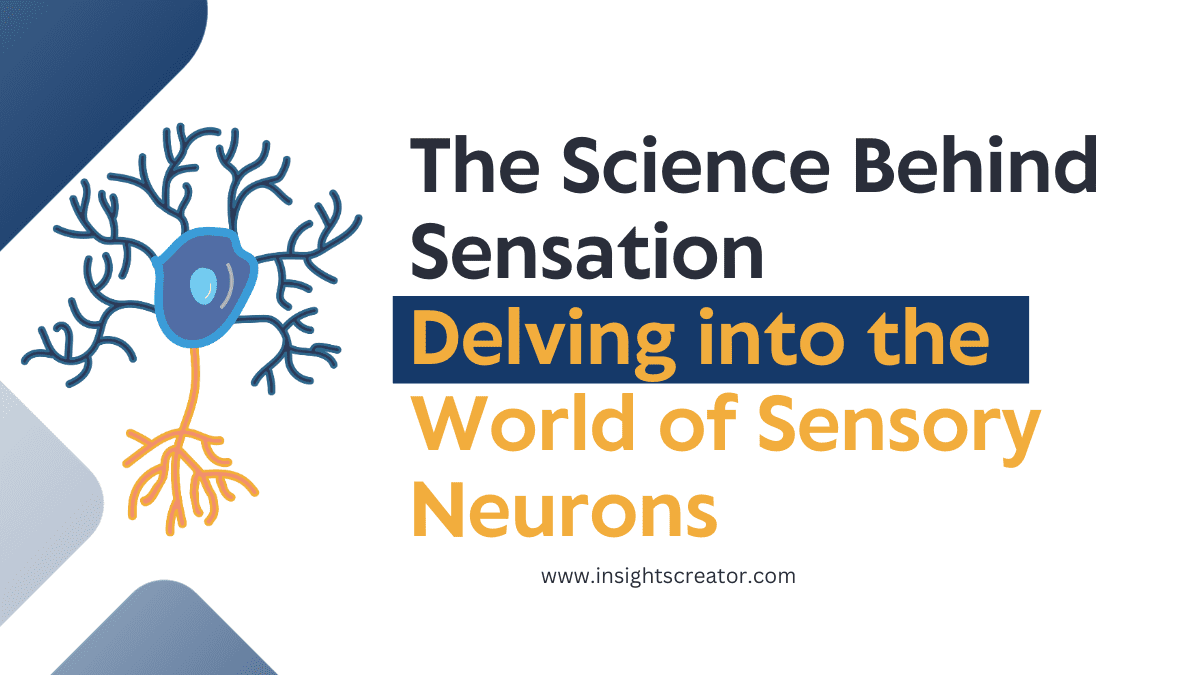Contents
The Science Behind Sensation: Delving into the World of Sensory Neurons
Have you ever wondered how we are able to experience the world around us? How do we feel the warmth of the sun on our skin or taste the sweetness of a ripe strawberry? The answer lies in the intricate workings of our sensory neurons. These remarkable cells play a pivotal role in transmitting sensory information from our surroundings to our brains, allowing us to perceive the world in all its richness. In this article, we will explore the science behind sensation and delve into the fascinating world of sensory neurons.

The Structure and Function of Sensory Neurons
Sensory neurons, also known as afferent neurons, are specialized nerve cells that transmit sensory information from different parts of our body to the central nervous system (CNS). They are like messengers, relaying signals to our brain and spinal cord, which then interpret and process these signals to give rise to our diverse sensory experiences.

Types of Sensory Neurons
There are various types of sensory neurons, each dedicated to a specific sensory modality. Let’s take a closer look at some of them:
- Mechanoreceptors – These sensory neurons perceive mechanical force or pressure. They are responsible for our sense of touch, allowing us to feel textures, vibrations, and pressure. Mechanoreceptors are found in our skin, muscles, and internal organs.
- Photoreceptors – Photoreceptors are specialized sensory neurons found in the retina of our eyes. They respond to light and enable us to see and perceive colors. This remarkable ability to convert light energy into electrical signals forms the basis of our visual experience.
- Thermoreceptors – These sensory neurons detect changes in temperature. They allow us to sense heat or cold, helping us navigate our environment and maintain a comfortable body temperature.
- Chemoreceptors – Chemoreceptors are responsible for our sense of taste and smell. They detect chemicals in the air or food we consume, enabling us to savor flavors and identify different scents.
- Nociceptors – Nociceptors are sensory neurons that respond to pain stimuli. They play a critical role in alerting us to potential harm or damage, helping us protect ourselves from danger.

How Tuberculosis is Transmitted-How to Save Yourself from TB
The Anatomy of Sensory Neurons
Sensory neurons have a unique structure that allows them to efficiently transmit signals. They are composed of three main parts:
- Dendrites – These are numerous branches emanating from the cell body of a sensory neuron. Dendrites receive signals from sensory receptors located in our body parts, converting sensory stimuli into electrical impulses.
- Cell Body – The cell body of a sensory neuron contains the nucleus and other vital organelles. It serves as the control center of the neuron, processing and integrating incoming signals.
- Axon – The axon is a long, slender projection that carries nerve impulses away from the cell body. It is responsible for transmitting sensory signals towards the CNS for further processing.
Signal Transmission and Processing
Now that we understand the structure of sensory neurons, let’s explore how they transmit and process signals to create our sensory experiences.
Signal Transmission

When a sensory receptor is stimulated, it generates an electrical signal called an action potential. This electrical signal travels through the dendrites and cell body of the sensory neuron, eventually reaching the axon. The axon then conducts the signal towards the CNS via a series of interconnected neurons.
The Role of the CNS
Once the sensory signal reaches the CNS, it undergoes complex processing and interpretation. Different regions of the brain are responsible for processing specific sensory information. For example, the visual cortex in the occipital lobe processes visual signals, while the auditory cortex in the temporal lobe analyzes auditory information.
Integration and Perception
In addition to processing sensory signals, the brain also integrates information from multiple sensory modalities. This integration allows us to perceive and make sense of our surroundings in a holistic manner. For example, when we see a red apple, our brain combines visual information with our knowledge of the apple’s taste and texture to create a complete sensory perception.
The Wonders of Sensory Adaptation
One intriguing aspect of sensory neurons is their ability to adapt to persistent stimuli. This phenomenon, known as sensory adaptation, allows us to become less sensitive to constant sensory inputs over time. For example, when we enter a room with a strong odor, our sense of smell initially detects the scent. However, as time passes, our sensory neurons adapt, and the smell becomes less noticeable.
Sensory adaptation is crucial for our ability to focus on new or changing stimuli in our environment. Without adaptation, our sensory system would be overwhelmed by constant sensory inputs, rendering us unable to detect subtle changes or important information.
Conclusion
The science behind sensation is a captivating field that unravels the inner workings of our sensory experiences. Sensory neurons, with their diverse types and specialized functions, enable us to perceive and interact with the world around us. Understanding the structure, function, and signal processing of sensory neurons opens up a realm of knowledge about the complex mechanisms that underlie our sensory perceptions. So, the next time you savor a delicious meal or feel the touch of a loved one, take a moment to appreciate the remarkable role played by our sensory neurons in making these experiences possible.
“Our sensory neurons are the messengers that allow us to experience the world in all its magnificence.”

